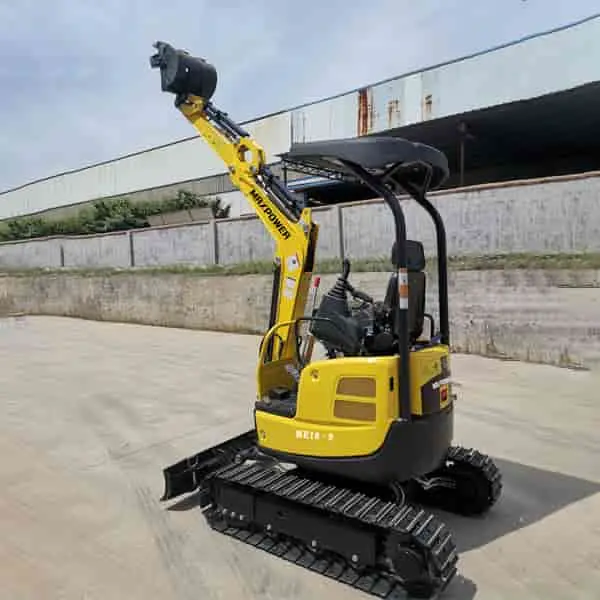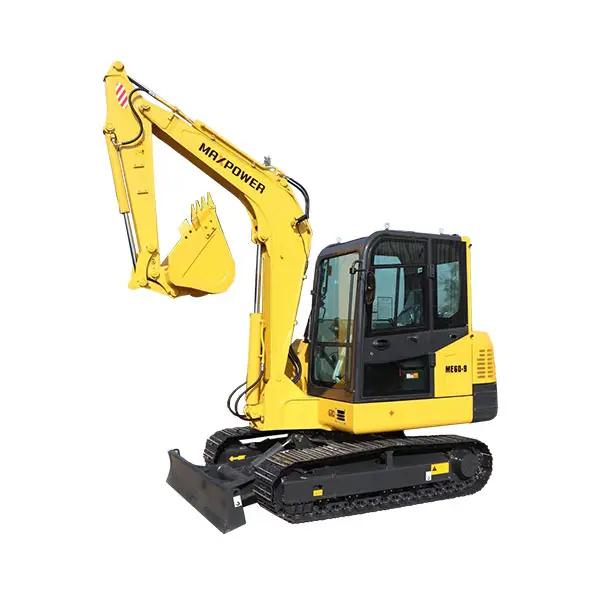مقدمة

Compact excavators, also known as mini excavators, are versatile small construction machines ideal for landscaping, excavation, and utility work on job sites with limited space. In this comprehensive guide, we will explore everything you need to know about compact excavators, including their features, applications, maintenance requirements, and answers to frequently asked questions. By the end, you’ll be well equipped to determine if a compact excavator is the right equipment for your small construction or landscaping projects.
What is a Compact Excavator?
A compact حفارة is a small, crawler-type excavating machine with an operating weight typically ranging from 1,000 to 15,000 pounds. As the name implies, compact excavators are designed for working in confined areas where larger excavators cannot access. They have a shorter tail swing radius and higher levels of maneuverability compared to full-size excavators. Some key features of compact excavators include:
- A boom, stick, and bucket attachment for digging, lifting, and material handling
- An enclosed cab for the operator with heat, air conditioning, and safety glass
- Hydraulic or electric controls for operating the boom, stick, bucket, and swing function
- Tracks or wheels for mobility across job sites
- Auxiliary hydraulic ports and lines for powering attachments
Applications for Compact Excavators

Due to their compact size and maneuverability, compact excavators excel at excavation, grading, trenching, and other earthmoving tasks in restricted spaces. Here are some of the most common applications:
- Landscaping – Digging holes for planting trees/shrubs, grading land, moving dirt/mulch
- Utility work – Trenching for cables/pipes, maintenance of sewer/water systems
- Construction – Foundation digging, grading building pads, material handling
- Agriculture – Clearing land, maintaining drainage ditches, handling silage/manure
- Snow removal – Grading/loading snow from parking lots, sidewalks, driveways
Compact excavator models and their recommended applications
| Compact Excavator Model | Operating Weight (kg) | Recommended Applications |
|---|---|---|
| Caterpillar 300.9D | 935 | Landscaping, utility installation, small-scale construction |
| Maxpower ME35.9 | 3700 | Foundation digging, utility trenching, landscaping |
| Bobcat E10 | 1176 | Residential construction, interior demolition, landscaping |
| Kubota K008-3 | 950 | Agricultural operations, irrigation system installation, light construction |
| John Deere 17G | 1745 | Site preparation, trenching, grading |
| Yanmar VIO17 | 1760 | Foundation digging, utility trenching, landscaping |
This table provides a brief overview of typical compact excavator models along with their operating weights and recommended applications. It can serve as a reference for contractors and construction professionals when selecting the appropriate compact excavator for their specific project needs.
Maintenance Requirements for Compact Excavators

Like any piece of heavy equipment, compact excavators require regular maintenance to maximize performance and longevity. Key areas to focus on include:
- Greasing all pins, cylinders, and pivot points weekly
- Changing engine oil and filters every 50 hours of use
- Inspecting and changing hydraulic oil and filters every 500 hours
- Greasing tracks or inspecting wheels monthly
- Inspecting hoses, wiring, and controls for any damage or leaks
- Sharpening teeth on buckets every 100 hours for optimal digging
- Checking coolant levels in summer and antifreeze in winter
- Washing machine after every use to prevent corrosion
Proper maintenance is essential to prevent downtime and repair costs associated with compact excavators. Following the manufacturer’s maintenance schedule is recommended.
خاتمة
In conclusion, compact excavators are versatile small construction machines well-suited for earthmoving, landscaping, and utility projects on job sites with limited space. Their compact size allows accessing tight spaces while still providing digging power. With proper maintenance and operation, compact excavators can help landscape, excavation, and utility contractors efficiently complete a variety of small-scale tasks. For landscapers, contractors, and facility managers handling projects like these, a compact excavator may be an indispensable piece of equipment.
الأسئلة الشائعة
Q: How long does a compact excavator battery last?
Batteries on compact excavators usually last 2-3 years with regular use and proper maintenance. Signs it needs replacing include slow starting, dimming lights, or needing longer recharges.
Q: What safety features do compact excavators have?
Safety features typically include rollover protective structures (ROPS), seat belts, back-up alarms, safety glass, and fire extinguishers. Operator training and following safety protocols are also important.
Q: How much does it cost to rent a compact excavator?
Daily rental rates usually range from $150-300 depending on the excavator size and attachments included. Weekly and monthly rates offer discounts. Delivery, pickup, and insurance may add to the total cost.
Q: What is the fuel capacity of a compact excavator?
Fuel capacities vary by model but are typically 10-25 gallons. Fuel efficiency also depends on the work being done – expect 5-8 hours of run time per tank under normal operating conditions.







-150x150.webp)
